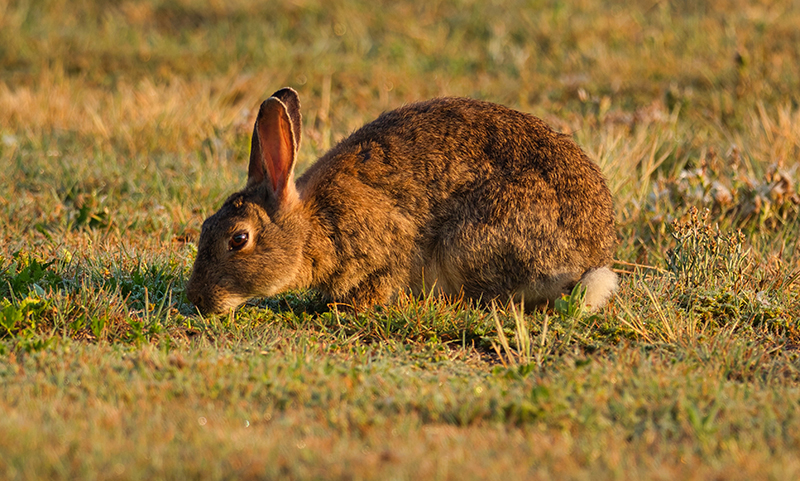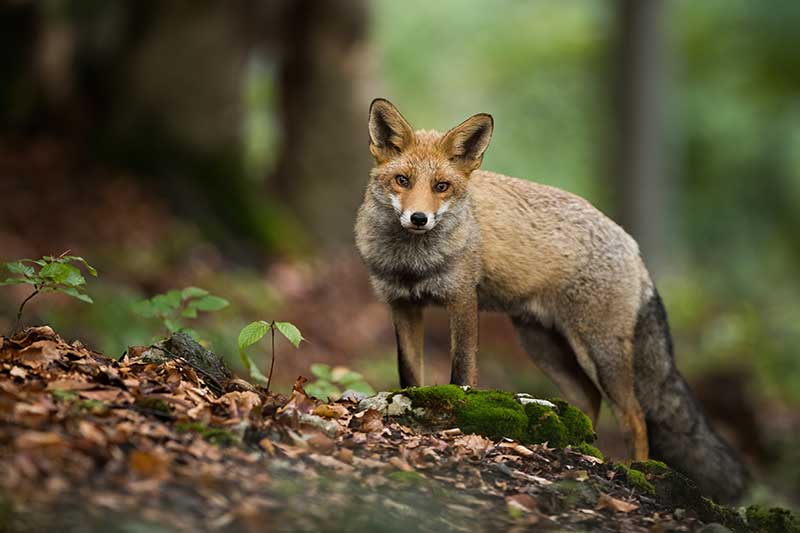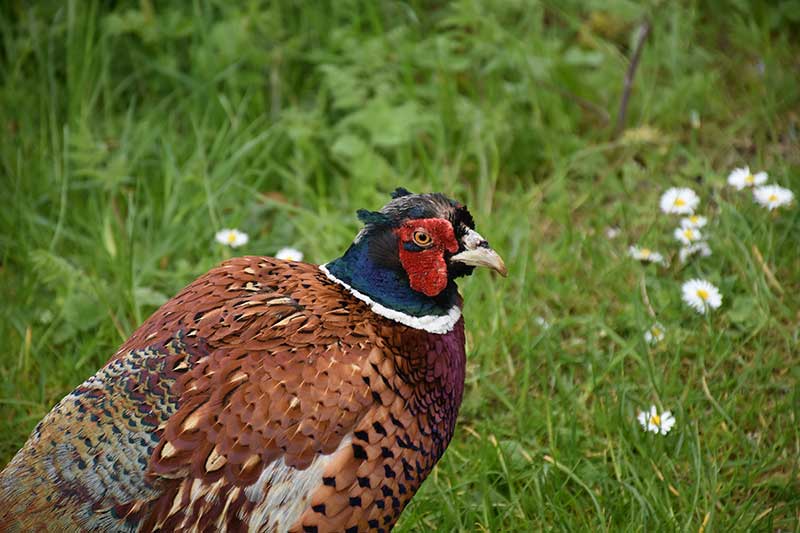From squirrels to upland birds, small game hunting is a favorite pastime past down from generation to generation.
When not chasing bucks or bulls, many hunters turn to small game hunting. Small game species are numerous and can include upland birds, turkeys, and other fur bearing game such as rabbits, squirrels, coyotes, and more. Read on for information on how the types of small game and how to legally pursue them.
Why limit yourself to public land when there are millions of acres of private land to explore.
What is considered Small Game?
Small game is a generic term to refer to huntable game that is generally under 40 pounds. It can oftentimes be confusing because when most people think of small game, they think of mammals such as squirrels, rabbits, raccoons, or coyotes; but small game also encompasses upland birds, migratory birds, and turkeys.
Small game each have their own hunting seasons and bag limits. You’ll find that some mammals such as coyotes or raccoons have long seasons and bigger bag limits; while upland birds, turkeys, and waterfowl have limited season dates and bag limits. It’s important to check state wildlife agency websites for details on when it is legal to hunt small game including season dates, bag limits, and means of take.

Small Game Mammals and Furbearers
Mammals and fur bearing game make up a large portion of what is considered small game animals in each state. These animals are typically hunted with small bore rifles or shotguns, or by trapping, an age old tradition.

Rabbit & Hares
These small animals can include cottontails to jackrabbits to snowshoe hare. They are traditionally hunted with beagles.

Squirrels & Marmot
Squirrel season often starts early and allows hunters to enjoy time afield before other hunting seasons open. Squirrels species can range by region but can include gray, red, or fox squirrels. They can be pursued with or without hound dogs. Marmots appear similar to squirrels but are generally found at higher elevations. However, in the East you may hear them be referred to as woodchucks or even groundhogs.

Coyotes
In most states, hunters can pursue coyotes year round. These predators are wily, but will often respond well to calls, making coyote hunting a favored hunt by predator hunters with rifles. They are also pursued by trappers who set foothold traps or snares to catch the predators.

Bobcats & Lynx
These two cat species are rare to see. Bobcats can be pursued with special permits, while the lynx can only be hunted in Alaska.

Fox
Hunters can pursue red, gray, and arctic fox in the U.S. but species vary by state, as do the rules of fox hunting. Be sure to check your local regulations carefully.

Prairie Dogs
Prairie dogs actually belong to the squirrel family. They are very destructive and take over large swaths of land in what some refer to as “prairie dog towns.” Seasons on prairie dogs are often year round and they are generally taken with rifles chambered in .22 or .223.

Groundhogs, Muskrats, Beavers
These mammals are trapped for their fur or for causing destruction on private property. These animals may be trapped with leg-holds, Conibear traps, clamshells traps, and more.
Other Furbearers or Predators
Small game also includes raccoons, weasels, badgers, wolverines, skunks, mink, marten, fishers, and more. Season dates, means of take, and bag limits are outlined in each states hunting regulation guidelines.
The hassle free way to monetize your acreage.
Small Game Birds
Upland birds and waterfowl are also considered small game animals. This can be confusing to new hunters as sometimes states will categorize birds as small game or have their own hunting regulations book under the title “upland birds.”
Upland Birds
There are numerous species of upland birds across the country that hunters can pursue. Each state holds different birds and season dates.

Grouse
Different species of grouse include ruffed, blue (dusky), spruce, sharp-tailed, and sage grouse. Ruffed grouse can be found from Maine to Michigan to Idaho, while blue and spruce grouse are found in only the western half of the U.S. Sharp-tail and sage grouse can be found in the midwest to the west in rolling prairie and sage bush environments.

Quail
This little bird is iconic and includes the bobwhite, California, mountain, Gambel’s, scaled, and mearns quail. The bobwhite is favored by many hunters and can be found in the south and midwest, while the other species are found in the western and southwestern part of the country. Learn more about quail and the best ways to hunt.

Partridge
You may recognize the name Hungarian (gray) partridge, but not realize that chukar are also considered “partridge.” Chukar and Hungarian partridge (Huns) are western birds that present a true challenge to hunters brave enough to pursue them. Huns can be found in vast swaths of land that aren’t for the faint of heart, while chukar like steep, rocky outcroppings.

Pheasant
Hunting ring-necked pheasant is a favorite sport by many upland hunters. One of the larger upland birds, pheasant are considering small game as well. You can find wild pheasants from the midwest to the western half of the U.S.

Doves
September 1st marks the start of hunting season each year by kicking off dove hunting. Thousands of hunters are said to flock to field edges to pursue these little birds on September 1st. They are fast flyers but delicious table fare.
Waterfowl
Migratory birds also fall under the small game category. Ducks and geese are a highly regulated species with specific hunting seasons, dates, and even in some circumstances tags. It’s important to check your state regulations before heading afield.

Geese and Swans
There are multiple species of geese as well as swans that migrate through the U.S. Canada geese and snow geese are the most common for hunters to pursue. Other geese such as the Emperor and swans require special permits to hunt.

Ducks
These waterfowl come in all shape and sizes and migrate south through the four different flyways of the U.S. Seasons vary by species and location. Learn more about duck hunting.

Sandhill Crane
These dinosaur-looking birds make a lot of noise as they make their way south through the Lower 48 each year. They are excellent table fare but most states require a special tag to hunt
Sandhill cranes.
Why limit yourself to public land when there are millions of acres of private land to explore.
Requirements for Small Game Hunting
When hunting for small game, it is required that you purchase a hunting license before you can legally hunt. For some small game animals, a hunting license is all you need, for others, you need to purchase special tags or a Federal Duck Stamp.
Where to Hunt Small Game
Small game are found across the country on both public and private land and water. Of course there are benefits to pursuing game on either.
Public Land
Public means that any legal hunter can pursue game on the land. This is beneficial to hunters who do not have access to private land and opens up thousands of acres of prime hunting land for their pursuits. However, hunters cannot manage how many other hunters are also hunting the same area as them. This can put pressure on small game animals such as upland birds and waterfowl, making hunting even more hard than it already is. You cannot control hunting pressure, so it’s vital to find spots that other hunters aren’t willing to hike to.
Private Land
Private comes with the advantage that only hunters with permission may pursue small or big game on the land. This means that hunting pressure may not be as high as public land spots, thus animals a bit more plenty. It’s not guaranteed as many factors come into play such as habitat, but having access to private land to hunt definitely has more positives than negatives. Predators and other small game can be found almost anywhere, but small game such as upland birds and waterfowl depend heavily on habitat and food to survive. Animals such as birds will seek shelter where they feel most safe, which is often unpressured private land.
FAQ
Can you hunt small game with a .22 rifle?
Yes, small game hunting can be done with a .22 rifle depending on species. Squirrels, prairie dogs, racoons and other fur bearing game are mostly pursued with .22 rifles. Check your local rules and regulations to see what form of take is legal in your state.
Do you need a dog to hunt small game?
No, you do not need a dog to hunt small game. However, small game pursued with dogs is a favored pastime by many. Rabbits, squirrels, and raccoons are often hunted with the use of beagles and other hound dogs.
Do you need a license to hunt squirrels?
Yes, you need a license to hunt squirrels as well as many other small game animals. Check your state hunting regulations to ensure you have the proper license to legally hunt.
Are turkeys considered small game animals?
Yes, turkeys are also often classified as small game. Turkeys require a special tag to pursue them. You can hunt turkeys in both the spring and fall. Check your state game laws for rules, regulations, and season dates.
Why limit yourself to public land when there are millions of acres of private land to explore.



